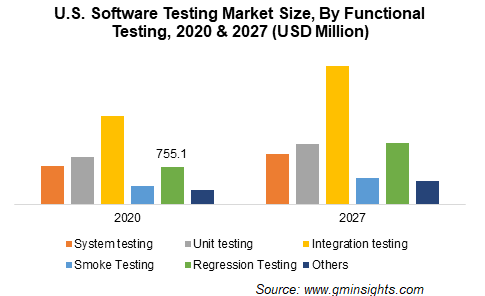How Crowdtesting Helps Ensure Ideal Ecommerce Experiences
A key part of running a successful ecommerce business is making your customers happy and delivering excellent experiences to them.
It’s no surprise, then, that customers have higher expectations from businesses now more than ever before—and that businesses have to do their best to meet those expectations.
Look at the statistics in the image below. If a customer has a good or bad experience, then they are likely to share that experience on social media, with the company, or with a friend. Ensuring that those experiences are positive can expand your client base and build your reputation, while the opposite could do serious damage to your brand.
So, how can a modern ecommerce business keep pace with its customers’ demands for amazing experiences?
One great way to approach this idea is by crowdtesting your software or site. Crowdtesting has the potential to massively improve the way your customers experience your products, which means delivering those experiences they’re seeking and turning more browsers into buyers.
Before we get into how crowdtesting can help you achieve this business goal, we’re going to provide an overview of what crowdtesting is and how it works. Let’s get right into it.
What Is Crowdtesting?
Essentially, crowdtesting is the term given to an open test that involves large numbers of people (crowds) testing out a piece of software or a website for a company.
Businesses that want to crowdtest their apps or sites will often make a beta version (a version to be tested) available to groups of testers. These testers then use the beta version and send feedback to the developers about bugs, glitches, and other issues they encountered.
Crowdtesting can hypothetically last indefinitely. While some businesses prefer to set a hard limit on the amount of time a piece of software or website spends in the testing phases, others choose to continue gathering data through crowdtesting for extended periods of time.
How Does Crowdtesting Connect With Ecommerce Experiences?
The world of ecommerce is becoming more competitive every year. That’s a double-edged sword; while a more competitive market means more potential for sales, it also means there’s more companies to compete with to get those sales.
Unless, of course, your website or app is simply better or more popular with buyers than what your competitors are offering.
This is where crowdtesting comes in. With crowdtesting, you can take your ecommerce business and elevate it above the competition in a few different ways, which we’re going to cover below.
The short of it is that crowdtesting helps you improve your digital storefront, which gets you those coveted sales and increases your standing with your customers by improving the experience you provide.
How Does Crowdtesting Work?
The easy answer to this question is that crowdtesting works by having many different people try out the element in question at once.
The less easy answer is that it can work in multiple ways. As mentioned before, crowdtesting can take the form of a beta app or site made available to large, but specific, groups of people.
It can also be conducted in a more open fashion, with software or other resources made available to the general public under the condition that they acknowledge they’re using a non-final version and will (or should) be providing feedback.
Let’s take a look at what you need to have in place before you start crowdtesting, as well as a step-by-step breakdown of exactly how crowdtesting works.
Prerequisites
To prepare for crowdtesting, your software or site must have gone through every other testing stage first. That means it’s got to have completed a smoke test or two (preliminary testing to pick up on any initial problems), as well as unit, functional, sanity, and integration tests. These tests identify any issues with the code itself, ensuring that the software works smoothly and in the required manner.
The last step before crowdtesting is alpha testing, a controlled in-house test of the final software or site. This involves having a select number of people within the company, but outside of the development team, test for bugs and errors.
These phases of testing are all very useful in assuring the quality of your final product. That’s why every aspect of the software testing market is projected for rapid growth:
Step-by-Step Guide
After ironing out any initial glitches and bugs with your software or site, it is now ready to be tested in a more diverse environment. This is where crowdtesting comes in. But how do you go about doing it?
Step 1: Planning. In this first step, your company defines the scope of your testing and outlines the types of testers you’re seeking.
It’s important to plan right into the minute details during this stage. The more questions your plan can answer, the better it will be later on. Think about what exactly you want your testers to look for. Do you want them to pick up on bugs or give more general feedback on how the software or site works in real life? Also, how long do you want the testing process to last?
It’s useful to create a profile for the kinds of testers you need. Do you need them to have any prior knowledge or skills? For example, if you have created software aimed at assisting estate agents, it might be beneficial to have testers with experience in this area.
It’s also important at the planning stage to identify who is going to act as a point of contact for your testers and give feedback to the development team.
Step 2: Preparation. You’ll want to ready your test cases and recruit your testers during this stage. You can hire testers directly or use a specialized company to find people who fit the profile you identified in your planning stage. Amazon Vine could be a great resource to tap into at this point.
You might also want to think about how you’re going to incentivize testers. For example, will there be a reward for completing the test or for each bug identified?
Essentially, this step bridges the gap between planning things out and executing those plans.
Step 3: Launch. This is when the testing itself happens.
Your testers should know exactly what’s expected of them, including how long the testing period is expected to last and what kinds of errors, if any, you’d like them to look for. This will help the launch of your crowdtesting to progress more smoothly.
Step 4: Data synthesis. The previous step involved data collection, so in this one, it’s time to process that information. You’ll want to synthesize your data into formats that you can use.
Step 5: Completion. During this stage, you’ll be presenting your synthesized information to the relevant parties. This includes providing developers with the data they need to figure out where to concentrate their bug-squashing efforts.
Benefits of Crowdtesting to Ecommerce Experiences
Crowdtesting can take the ecommerce experience that you offer straight to a 10/10 if you use it right. That’s because it comes with a wide range of benefits, particularly the following:
Better Quality
Customers love service offerings (your website) and products that work well and are of high-quality overall. That’s a major reason why prioritizing quality content is a popular goal for businesses in the immediate future, in addition to improving the overall customer experience they provide.
Crowdtesting is particularly good at boosting the quality of software, products, websites, and more. That’s because it puts whatever you’re testing in the hands of a lot of potential future users and then asks them exactly how to make it better.
In other words, crowdtesting lets you improve your offering precisely the way your customers want you to. This means increasing its quality in tangible ways that will make customers happier.
User Feedback Prior to Release
More to the point of creating a website or app specifically using feedback provided by customers, user feedback is another key benefit that comes with crowdtesting.
When your users tell you how they feel about your site, you can easily adjust it to their tastes, needs, and preferences. You can build mobile apps that really make users happy using crowdtesting because of this. And you can do all of this before you need to roll out your app to the public at large or your site goes live.
Gauging the Audience’s Reactions
Feedback is one part of this, but there’s more to it.
By crowdtesting your website or apps, you can track usage patterns. This will tell you when people are more active on your app, as well as how much time they typically spend on it.
Tracking this type of data can also tell you whether there are any drops in user engagement—and analysis can tell you why. This means that you can tailor the final website or app according to your customers’ reactions to it, allowing you to craft the ideal experience based on real data.
Conclusion
Crowdtesting is a fantastic tool when it comes to elevating the quality and reach of an app, website, or brand in general. It shows you what your customers like and dislike, as well as how they engage with your software or offerings.
This makes crowdtesting highly useful in the world of ecommerce, which depends to a large extent on delivering great experiences to customers. Crowdtesting helps you hone the experience you provide, turning it into something customers love thanks to the feedback they provide during the testing phase.







